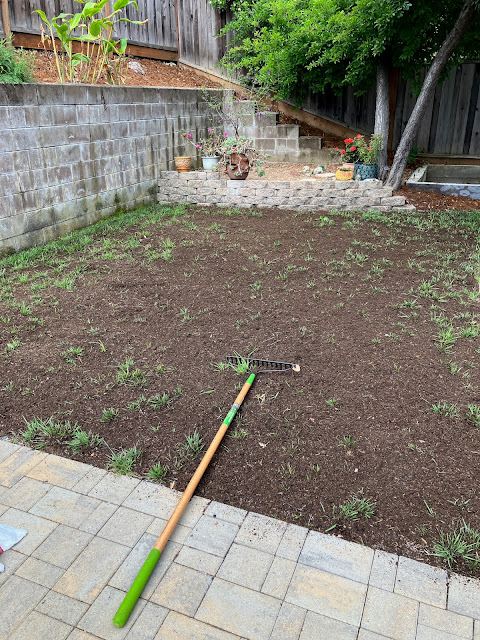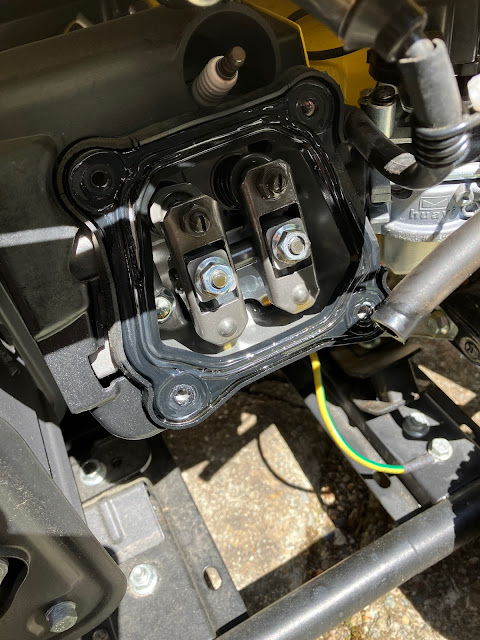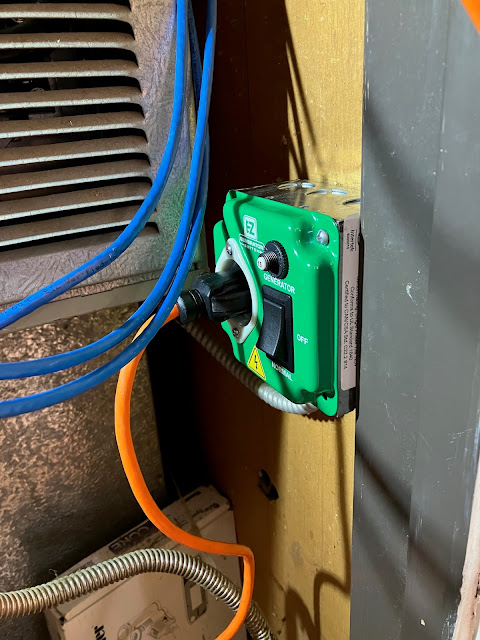As I've mentioned previously, my roof was not installed especially well by the previous owner. I'm pretty sure it's got two layers of shingles, which isn't a good start, and either the shingles themselves are very old or they were the cheapest brand on the shelf. That said, the north side is at least not doing too badly.
At least where "not doing too badly" is a highly relative term. Most of the aggregate is staying put, but there's a lot of places where nails are popping up through the shingle tabs, or where the shingles were just nailed in clear out in the open in the first place.
The south side is, naturally, weathering a bit quicker. It's still basically holding together but also has its share of nail pops and so on. The major issue, however, is the ridge shingles.
A few weeks ago, after a particularly blustery day, I noticed the corner of a shingle on the ground in front of my house. A quick peek at my roof revealed that one of the ridge shingles had become dislodged and the corners of a few of them had snapped off. So, it was time to get up on the roof again.
There wasn't much I could do about the missing corners, but thankfully ridge shingles are mostly decorative anyway, so the important thing was to just make sure the nails got sealed up. This photo also shows a good example of one of the many misplaced nails on the roof.
I also went down the line and used the cold patch schmoo to glue down the corners of the ridge shingle tabs to hopefully keep them from lifting and snapping off in future wind storms, and to keep them from shifting around in general since they aren't remarkably well secured to begin with.
Eventually I'll just need to get a new roof put on, but this should help keep things from leaking for a little while longer.










































